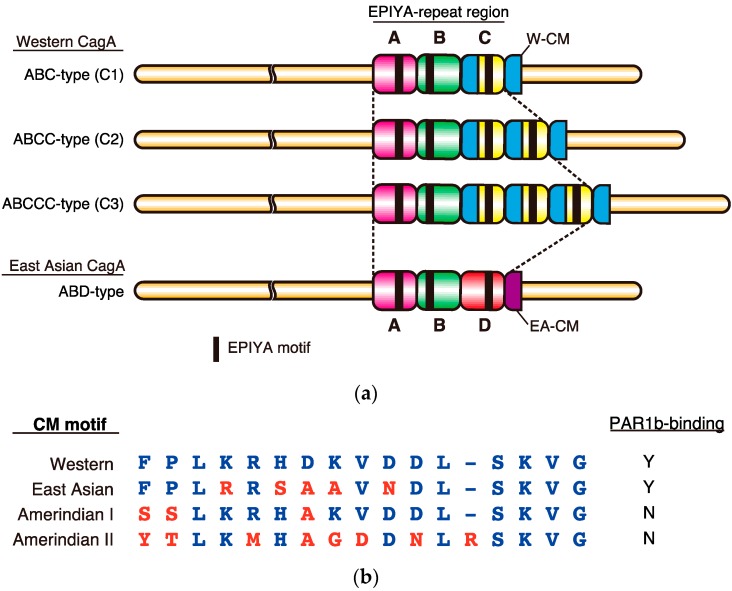Figure 1.
Polymorphisms in the C-terminal tail of H. pylori CagA. (a) The C-terminus of Western CagA is organized into segmental repeats characterized by EPIYA-A, EPIYA-B and typically 1–3 repeats of EPIYA-C segments, each containing a single EPIYA motif. Note that Western CagA always carries an extra copy of the Western CM motif (W-CM) flanking the distal end of the EPIYA-repeat region. In contrast, the highly oncogenic East Asian CagA usually contains EPIYA-A, EPIYA-B and a single copy of the EPIYA-D segment. Since EPIYA-D segment does not contain a CM motif, East Asian CagA typically carries only one East Asian CM motif (EA-CM), which flanks the EPIYA-repeat region at the distal end; (b) Sequence alignment of regional CM variants and their ability to bind PAR1b. Western, East Asian, Amerindian I, and Amerindian II CM motifs were obtained from strains NCTC11637, F32, Shi257, Shi193, respectively. Y; Yes. N; No.

